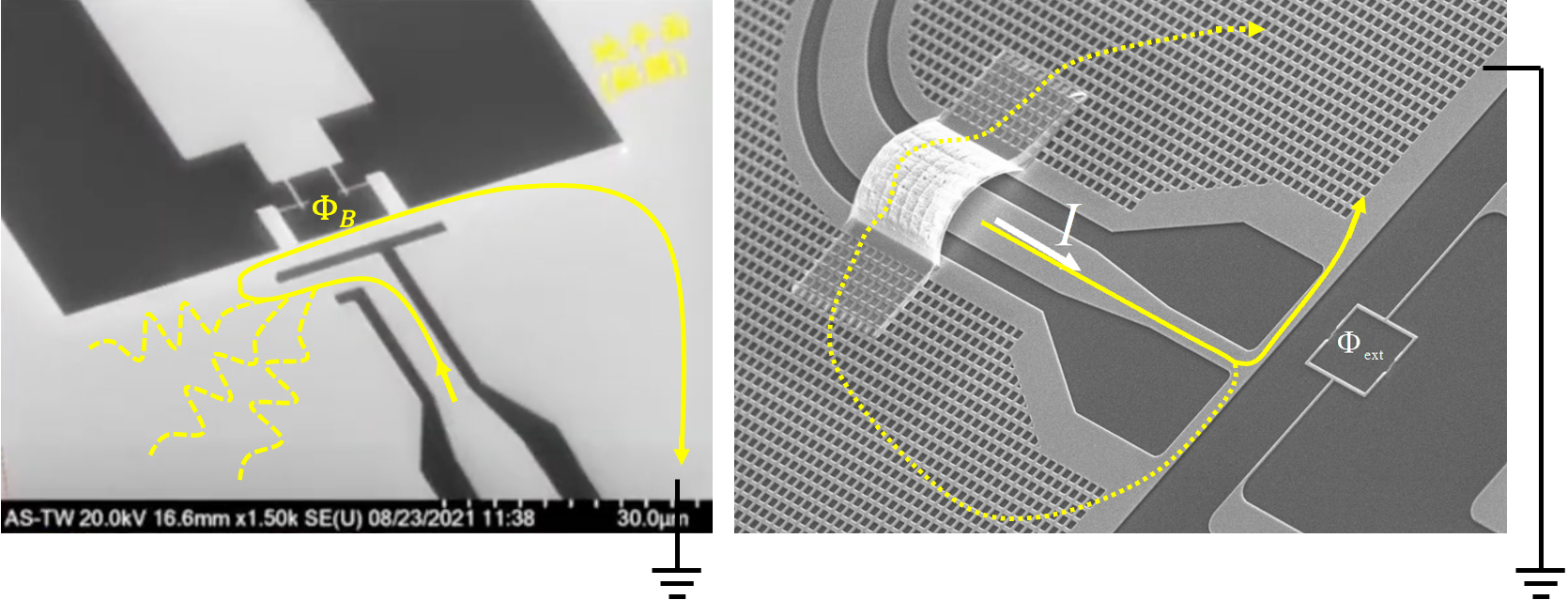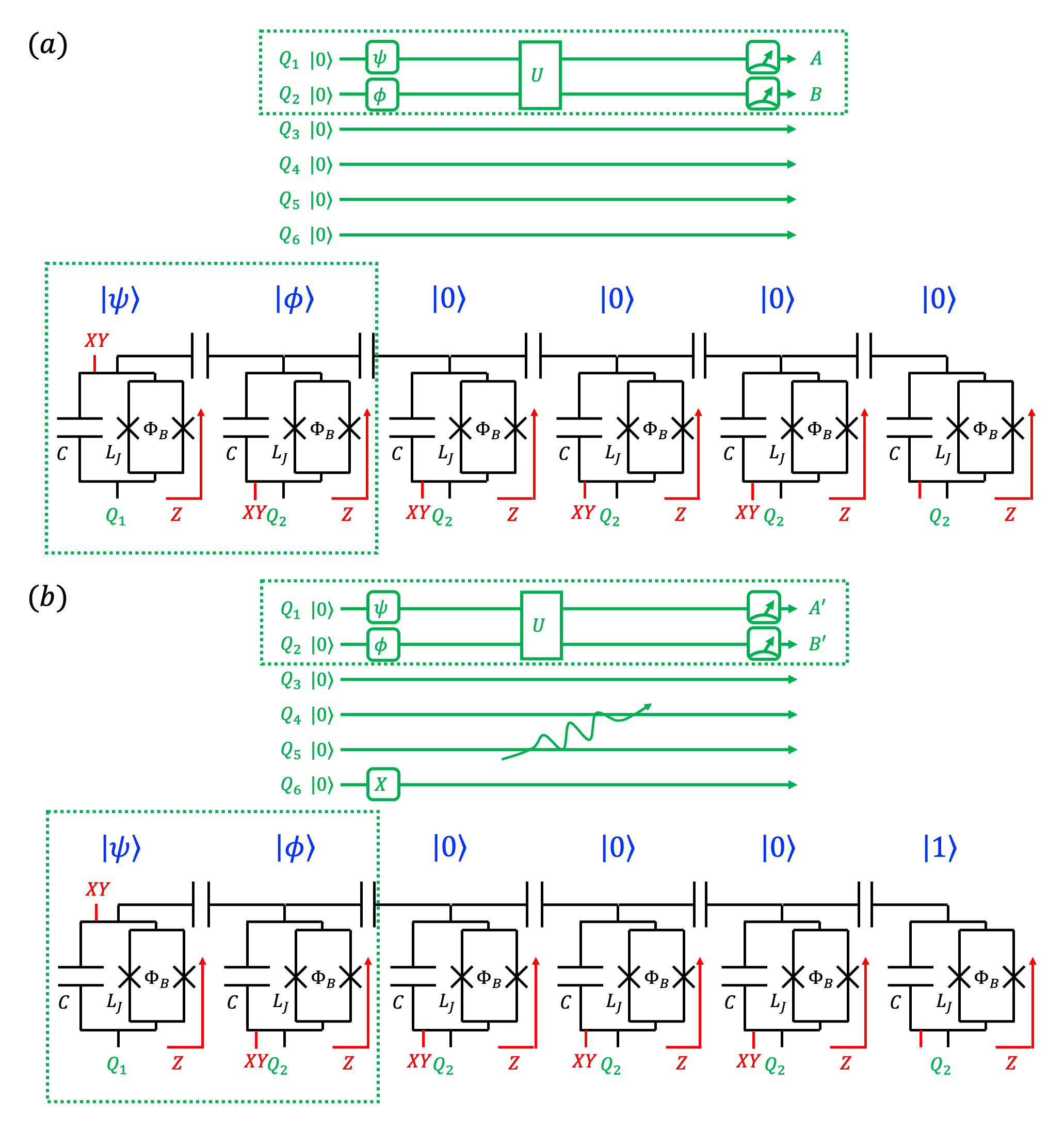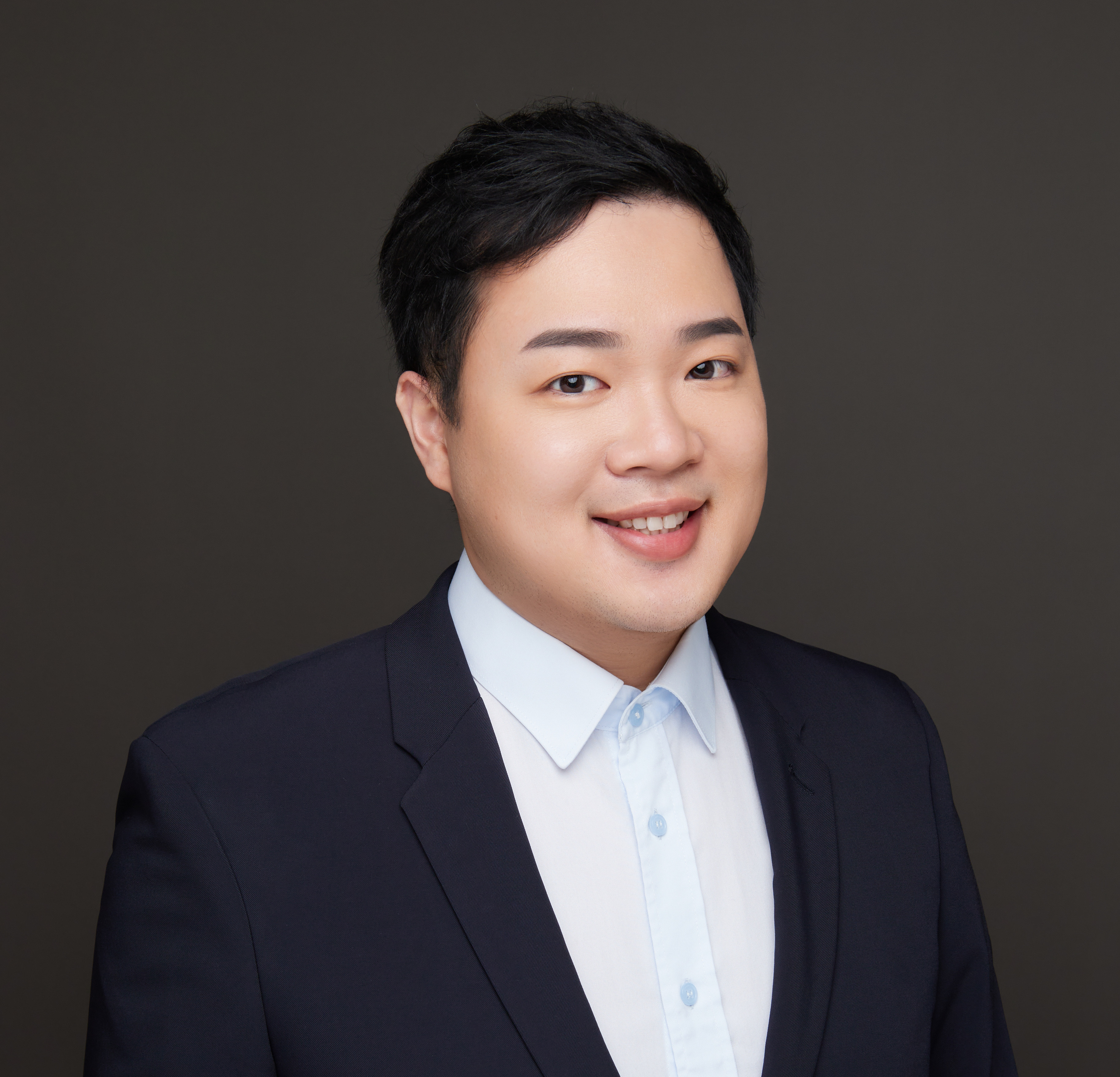Towards a Scalable QPU - The Issue of Crosstalk
In the current stage of quantum computer development, the system is, strictly speaking, a semi-classical, semi-quantum hybrid. Classical computers are used to send microwave signals carrying classical information, which then interact with the qubits. The qubits, in turn, return classical signals carrying quantum information, which are then analyzed by the classical computer. This characteristic allows us to roughly categorize the issue of crosstalk into classical crosstalk and quantum crosstalk. However, the reader need not worry too much about the exact definitions, as in practice, different types of crosstalk often occur simultaneously. Physicists and engineers use hypothetical crosstalk models to predict their occurrence and then perform optimizations.
Classical Crosstalk
Unintended effects caused by control signals, gate operations, or unexpected coupling terms between qubits are generally classified as classical crosstalk. This can be simply understood from the Hamiltonian:
\[
\hat{H}=\hat{H}_{qubits}+\hat{H}_{coupling}+V_{control}+\color{red}{\hat{H}_{unexpected}}
\]
Since quantum Hamiltonians are often derived by quantizing classical Hamiltonians, this type of crosstalk can often be simulated using classical models.
▲ Crosstalk caused by the leakage of electromagnetic fields from control signals affecting other qubits.
Ref: Drawn by the author
▲ Unintended coupling terms between qubits cause unexpected state transitions or decoherence.
Ref: Drawn by the author
Return Current Focus
▲ In modern high-precision electronic circuits, grounding issues require careful attention. Similarly, in quantum circuits, it is crucial that the current returns to the ground along the ideal path. If it strays across the chip, it can cause flux crosstalk. This necessitates designs that focus the return current, for example, by using airbridges to connect ground planes as much as possible, allowing the flux current to exit the chip quickly.
Ref: Left: Sinica
Right: https://i.sstatic.net/3lSUB.png
Quantum Crosstalk
Quantum crosstalk arises when the control of a specific target qubit is not as expected because other qubits are in different states. In the quantum world, the complete physical evolution involves both the Hamiltonian and the state vector: \[ i\hbar\partial_t \ket{\psi}=\hat{H}\ket{\psi} \] Since \(\ket{\psi}\) is a characteristic of quantum physics with no classical counterpart, crosstalk related to \(\ket{\psi}\) can be classified as quantum crosstalk.
▲ State Propagation: A qubit that is not in its ground state may affect other qubits that are.
Ref: Drawn by the author
▲ In an ideal quantum chip, when a computation is confined to a local subsystem, the operational result and quality should theoretically not depend on the state of the remaining qubits. In practice, however, even spatially distant qubits can potentially affect the operational subsystem.
Ref: Drawn by the author
Of course, the evolution of a quantum state is related to the Hamiltonian. A change in the state between different qubits must be related to whether there are interaction terms in the Hamiltonian. Therefore, the distinction between quantum and classical crosstalk is not always clear-cut. Crosstalk can be corrected through optimizations in the fabrication process, as well as through calibration methods that correct the gate operations.
|
This article is based on a talk given by Prof. Watson Kuo from National Chung Hsing University, at the invitation of Prof. Li-Yi Hsu from Chung Yuan Christian University, on the topic of:
Key issues in designing a scalable QPU
Event Date: 2025-06-18 Speaker: Prof. Watson Kuo (Dept. of Physics, National Chung Hsing University) Host: Prof. Li-Yi Hsu (CYCU) Place: R211, Science Building, Chung Yuan Christian University Time: 14:00 The author was deeply inspired and expresses sincere gratitude. |
|---|
Originally written in Chinese by the author, these articles are translated into English to invite cross-language resonance.





 Peir-Ru Wang
Peir-Ru Wang